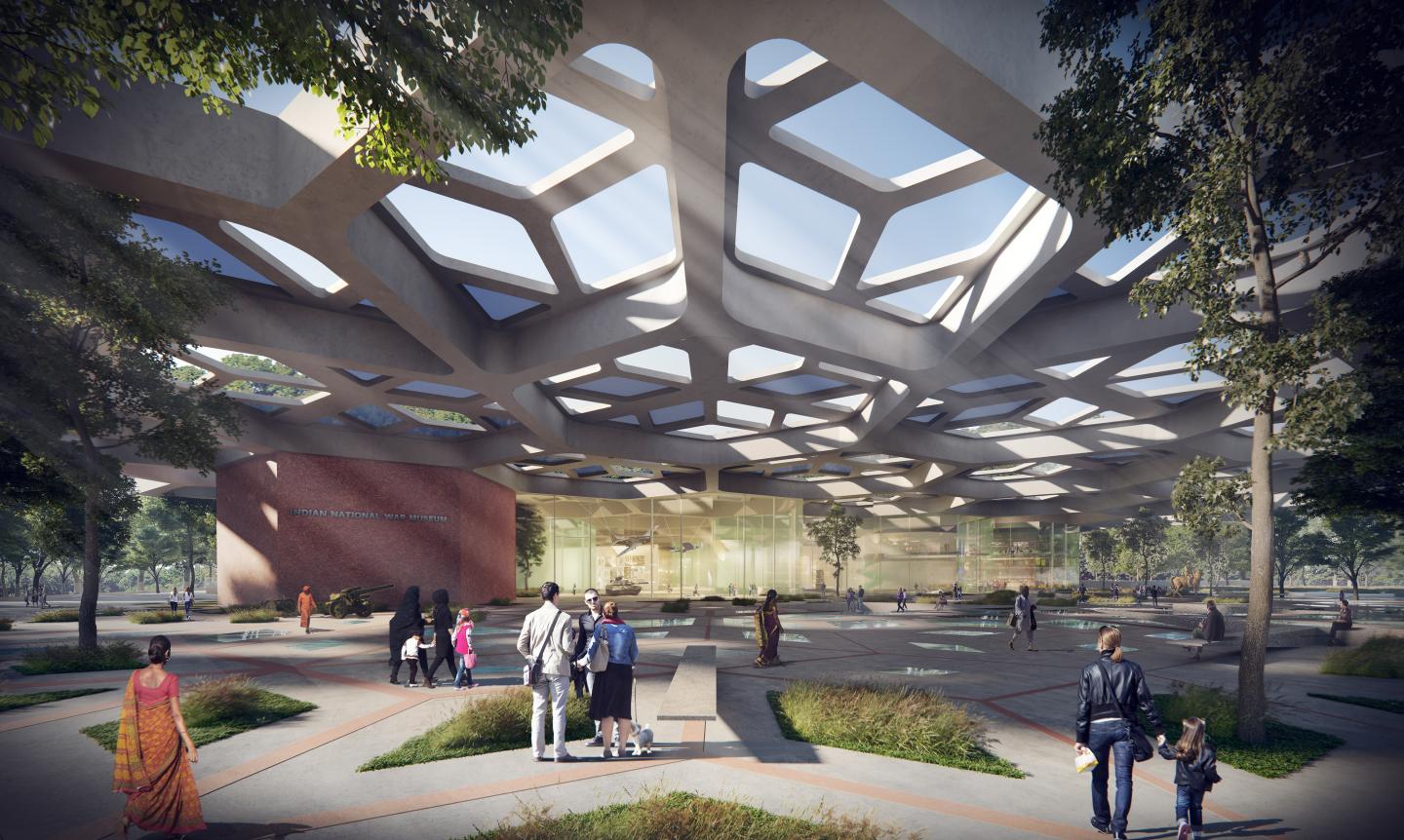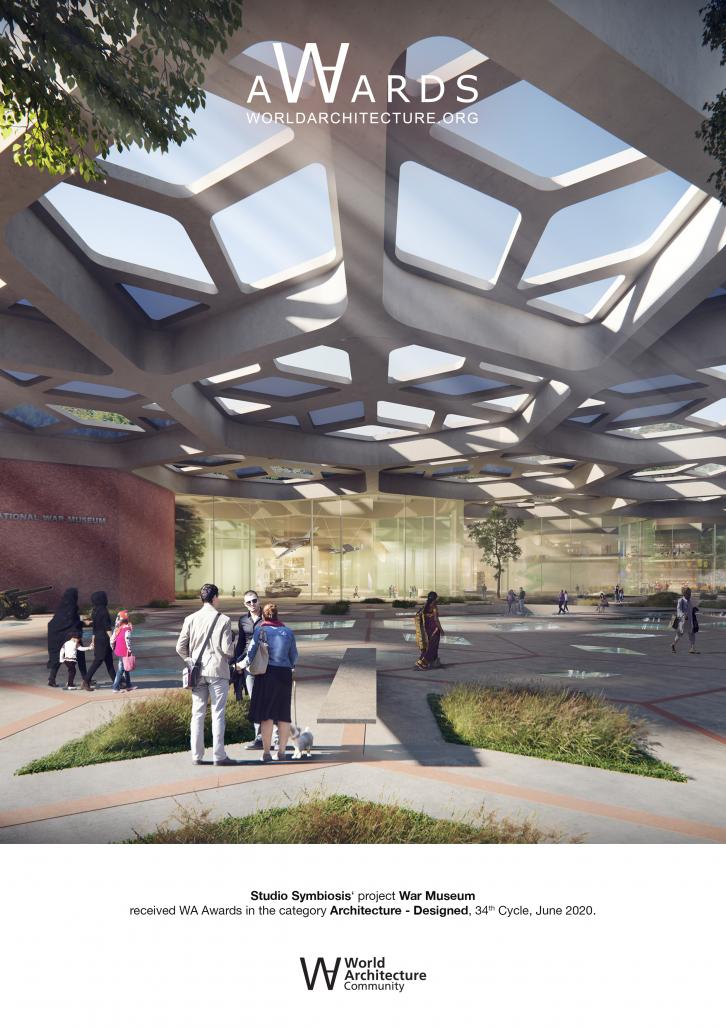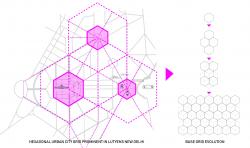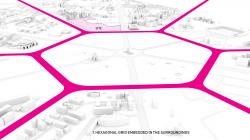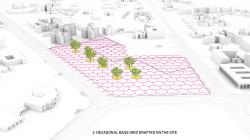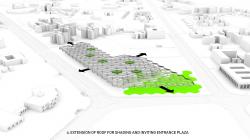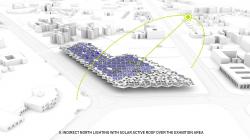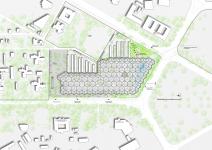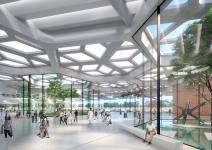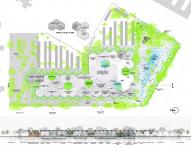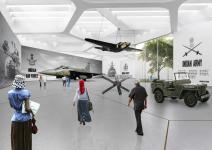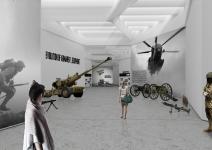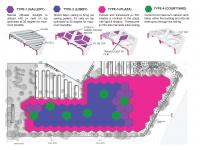The design proposal looks at highlighting the environment that the architecture is nested in, rather than creating architecture that overpowers the surroundings. The project site is located in Lutyens Delhi, at the epicentre of the capital of India. The genesis of the architecture of Lutyens Delhi is based on Indo-Saracenic architecture, this was an amalgamation of traditional Indian architecture along with contemporary architectural styles.
The same theme of amalgamating the past and present to create the future, has been embedded in the design proposal. Traditional Indian architectural elements, such as a “veranda” (Outdoor semi covered space) and “courtyard” have been integrated with the Hexagon (the defining element of Lutyens Delhi Master planning), to create contemporary spaces.
As an evolutionary process the design integrates, program requirements along with site opportunities. The design takes its inspiration from the immediate planning of Lutyens Delhi. Hexagon is a prominent architectural element that is embodied in the planning of Lutyens Delhi. A hexagonal component has been taken as the generative module for the design that adapts and morphs based on the requirement of the space. The grandeur of the surrounding landmark buildings is inculcated in the design in terms of material and height. A delicate relationship between nature, urban context, traditional Indian architecture and engaging the visitors has been instilled in the design.
Characteristics of traditional Indian architecture of continuity between the interior and exterior, in form of traditional “veranda” and “courtyard” are central to the design proposal. Green breathing courtyards have been provided in the proposal at various moments in the design. Polluted and recirculation air passes through these green courtyards and is enriched with oxygen and cleaned by plants. These green lungs of the design also provide a visual break and brings nature within the built.
The traditional veranda has been transformed into the urban outdoor lobby for the people of the city, where the exhibits and the visitors create an interactive space. The spaces engage with visitors bringing the exhibits closer to society. Designed as a floating cantilever with a perforated pattern, the roof of the building extends out and creates a shaded urban plaza to protect the visitors from the harsh climatic conditions of Delhi and acts as a pleasant urban space and a point of interaction. The Comfortable outdoor shaded space is provided with an animated play of light and shadow. Amphitheatre, café outdoor sitting become a lively urban lobby inviting to enter the museum and an active location for community.
Shallow water bodies are provided in the space that facilitate evaporative cooling and maintain an ambient temperature in this outdoor space. A public garden and landscaped plaza will accommodate site-specific installations and museum exhibits in a lush, peaceful setting, while an amphitheatre will play host to performances and events.
The existing trees on the site, have been taken into account during the design process. The outline of the design volume and the placement of courtyards have been done, to ensure that we can retain the maximum amount of trees on site, and rest of trees with be grafted on a different location of site.
Materials have been proposed for the design that would attain a patina over time. The building should age gracefully over time and embed in the surroundings. Red sand stone, concrete and glass are the materials that articulate the architecture.
Interlinked interior spaces are designed to maximize the use of natural light. Integrated courtyards as well as ceiling component allows natural light in the public and circulation areas and diffused light within the gallery spaces. These courtyards integrated into the museum path are giving the visitor a break out space and a moment to relax and reflect.
The component used for the roof adapts in response to the space ensuring best use of natural light. In gallery spaces skylights facing north have been provided to get diffused light into the gallery spaces and at the same time providing an inclined surface facing south for photovoltaic panels. In the lobby the ceiling has stretch fabric light ceiling, in courtyards it is open to sky and in the plaza the pattern is partially closed to ensure abundant shading.
The internal program like museum shop, café, library, restaurant all visible from outside and easily accessible. It offers a continuous visitor experience that lends itself to both exhibiting art and engaging with the community. There is an inherent flexibility in the design given the module system, which lends to ease of extension and alterations.
Net Zero was a key element for the design proposal as an environmentally friendly building which also showcases the sensitivity of the museum to the society. Digital simulation have been done to reduce the heat gain of the building and achieve optimum daylight inside the building. Elements of green breathing courtyards, photo voltaic panels, natural ventilation, and abundant use of natural lighting, active slabs and a winter garden were further deployed towards achieving a net zero building.
2017
0000
Built up area: 29200sqm
Exhibition space area: 10020sqm
Sustainability: Transsolar Klima Engineering, USA
Structure: Schlaich Bergermann and Partner, Germany
Lighting: OVI – Office For Visual Interaction, New York
Team: Amit Gupta, Britta Knobel Gupta, Kartik Misra, Pranav Semwal, Dewesh Agrawal, Akshay Kodoori, Manu Sharma, Sri Hari Kanth Venna, Nitish Talmale.
War Museum by Studio Symbiosis in India won the WA Award Cycle 34. Please find below the WA Award poster for this project.
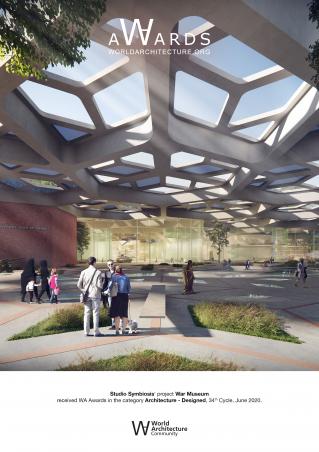
Downloaded 106 times.
Favorited 1 times
